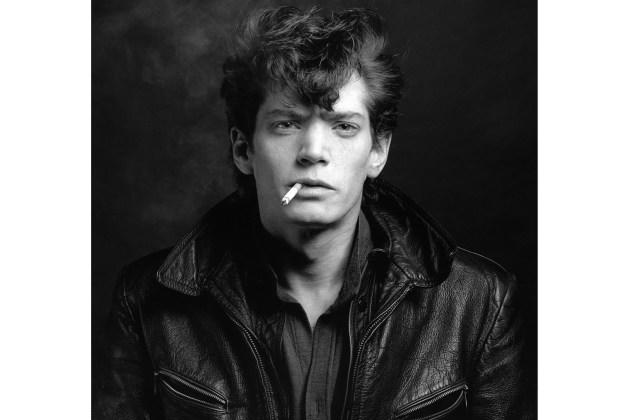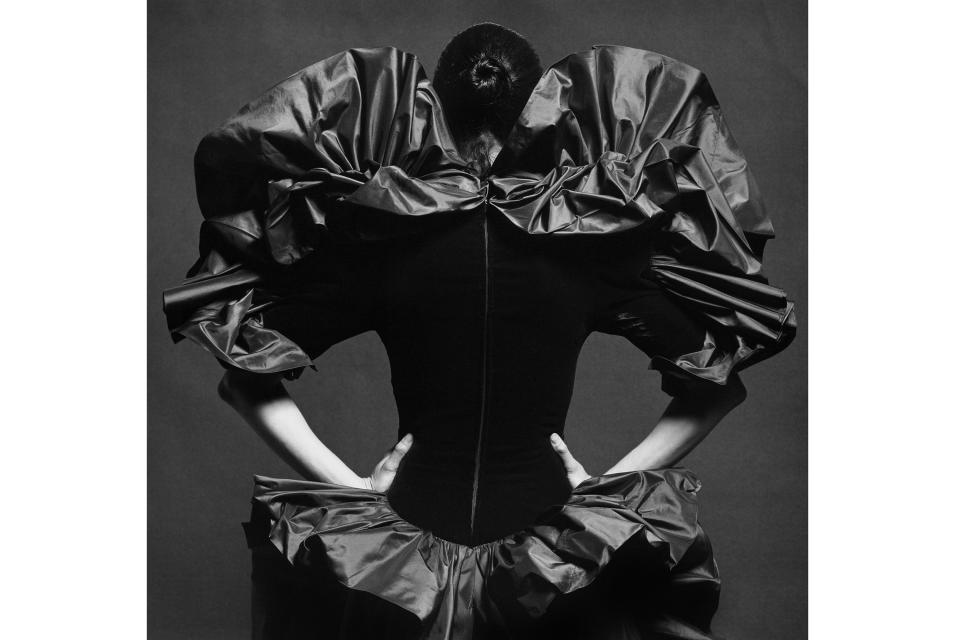Paris Toasts Robert Mapplethorpe During Fashion Week

American photographer Robert Mapplethorpe would have been thrilled to be the toast of Paris Fashion Week with the opening of an exhibition on his work at the Thaddaeus Ropac gallery on Saturday.
“It was a world that fascinated him,” Robert Mapplethorpe Foundation president Michael Ward Stout told WWD.
More from WWD
But despite connections such as a close relationship with Carolina Herrera, the late photographer’s projects in the industry remained sparse.
That may change now. “He’s already achieved the fine art level in every major museum in the world,” said Ward Stout. “Now he’s getting this popular attention that he’d always wanted and someone like Edward Enninful helps bring it there.”
More than three decades after his death, Mapplethorpe’s images “have something to say to us today,” gallerist Thaddaeus Ropac told WWD at the opening.
To bring this to light, the gallery called on Enninful to curate the exhibit running through to April 6.
Arranged in the manner of a flatplan throughout the gallery, the photographs form a dialogue as their shapes and silhouettes find an unexpected echo in the companion image they’re paired with.
Enninful said his career as an editor made him used to finding harmony or creating tension in double-page spreads. “Everything has to be about storytelling,” he said.
But rather than create a narrative ahead of time, the seasoned editor said he’d let instinct guide his hand through an expansive archive that spans still lives, portraiture, fashion photography but also nudes and even racier work.
“I didn’t go with must-have pictures,” he continued. “His work is so broad and has everything that I love — society, fashion.”
From a portrait of British artist David Hockney reclining and yawning and a seemingly candid snapshot of Princess Margaret in a swimsuit to the glistening bodybuilt muscles of Arnold Schwarzenegger or the tender embrace of a white and a Black man, the curation explores how Mapplethorpe defied the aesthetic standards and conventional definitions of beauty.
It’s this disruptive side that found resonance with Enninful.
“My whole [aim] was to bring the idea of what is beautiful into fashion without a preconceived view in terms of age, shape or race and he did that by bringing all these incredible people to the studio, who were not necessarily famous,” he told WWD. “And I’m obsessed with his lighting.”
This offered a fresh perspective even to one with an enduring and profound connection to the photographer’s body of work: Ward Stout, who was also the late photographer’s lawyer and friend.
“Mapplethorpe created a lot although he died young and [Enninful] was able to identify images that I almost don’t remember,” he said. “And then his way of pairing things, seeing [the exhibition] as a magazine, laying out the pages, works very well.”
Ward Stout felt the photographer would have been thrilled with this development and the connection with fashion. “While he was very successful in the later years of his life, Robert wanted to be more involved in fashion,” he recalled.

But the foundation Mapplethorpe set up before his 1987 death of AIDS-related complications isn’t ready to rush to sign a host of projects.
“After his death, we were very conservative,” said Ward Stout. “We were nervous of doing something the artist wouldn’t do.” For a number of years, that meant favoring paper products such as postcards and calendars.
“But then we started loosening up,” the foundation executive continued. “The criteria is really what the use will be [and] how good the quality of the licensed products [is].”
Such projects remain therefore few and far between, despite a steady flow of solicitations the foundation turns down.
There was jeweler Gaia Repossi, who unveiled a collection based on the jewelry Mapplethorpe wore and made for his friends in 2021 and prior to that, Raf Simons had translated images into prints for his spring 2017 collection.
Most recently, Paris-based designer Ludovic de Saint-Sernin became the first to rework the photographer’s work into motifs in his fall 2024 collection or bring some of the characters from his images to life on his New York runway in February.
But don’t expect to find echoes of his work everywhere yet. “I’m not sure his obsession with form and beauty and formality is fashion relevance today,” tempered Ward Stout. “But maybe it’s coming back to that.”
The fashion contingent certainly turned out in force in the cultural hot spot in the Marais, despite battering rain in the late afternoon and an 8 p.m. Alexander McQueen show on the other side of a gridlocked town.
Among those taking in the diptychs were Balenciaga chief executive officer Cédric Charbit, Christian Louboutin and makeup guru Pat McGrath, who only had one word for it all: “Beautiful.”
For Juergen Teller, today’s viewers are in thrall because the work is “very personal and very strong,” said the German photographer. “It’s not like photographing clouds or this and that. There’s something very him.”
That unmistakable signature pushed designer Julie de Libran to bring her son, who is considering a career in filmmaking and photography. “He had to see this to understand what it takes,” she said.
Taking in the black-and-white images, Haider Ackermann said that Mapplethorpe’s work felt “never dated, always actual.”
What’s more, the photographer’s ability to elicit a deeply personal reaction through very confronting images is “what was so controversial back in the day when he became so famous in this high bourgeoisie,” the designer continued. “Somewhere, everybody could find or relate to [them] — that’s why they all bought them.”
Best of WWD
Solve the daily Crossword

